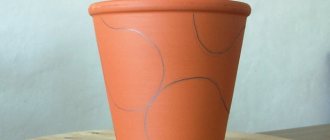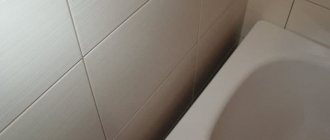Foamiran material, what does it consist of?
This is a fairly new material, completely synthetic based. Its main production is established in Iran, there is a little Chinese and Korean fomiaram. And even the name foamiaran (literal translation “Iranian foam”) comes from the consonant name of the Iranian company that produces it “FoamIran”. Needlewomen simply call it fom or foam. The properties of the material resemble porous, foam rubber or plastic suede, but everyone emphasizes one thing: the material has truly “magical” properties.
Foamiran material properties (fom)
This material has a soft structure, is very easy to work with, pleasant to the touch, and can be cut perfectly with any sharp tools, be it scissors or a knife.
Foam, like a product made from plastic suede, is waterproof and washes well. Exposure to moisture does not have any consequences on it, but it must be taken into account that the decorative elements with which the foam is decorated may suffer when exposed to water.
A unique property of foamiran is its ability to take any shape when exposed to temperature. At the same time, it remains in the position in which it was modeled forever, while possessing increased resistance to external factors. But this material is not heat-resistant and exposure to high temperatures leads to its complete deformation (this must be taken into account when setting the shape of the foamiran). Also, you should not stretch it too much, otherwise the form may break.
In addition, which is no less important, the material, despite its synthetic base, is environmentally friendly and non-toxic. Therefore, the material can be used even by children in their fakes without unnecessary safety measures.
Tools for working with foamiran
Decorative foam material with the mysterious name Foamiran is a raw material that contains ethylene vinyl acetate. Since it became known here relatively recently, many unusual names were invented for it: foam, fom, revelour, plastic suede, foam rubber. The main name was obtained thanks to the country of origin - Iran (foam Iran), today it is the world's largest supplier of this raw material. In addition to Iranian, there is fom from China, Korea and Turkey on sale. Each manufacturer has its own advantages and disadvantages, so each needlewoman selects the optimal type for her using trial methods.
Made in China, thicker foam is good for creating some floral products and is popular in scrapbooking. In addition, a thickness of more than 1 cm allows you to cut designs on the sheets, similar to wood carvings. The Turkish product is sold in sheets and rolls and has smooth edges, while Korean foam rubber holds its shape well. However, most masters love the Iranian form. Due to its thinness, it is pliable, it is easy to give it the desired appearance and is easy to process.
Properties and Application
At first glance, sheets of foamiran look like thick paper of different thicknesses, with a structure like a tight sponge or suede. It is easy to cut, and thanks to its plasticity under the influence of heat, it stretches perfectly, taking and maintaining a given shape, which is very helpful for beginning craftsmen. Depending on the country of origin, you can find different sets of colors. Foamiran is not afraid of moisture and direct sunlight, it is environmentally friendly, which makes it possible to use it in joint creativity with children. The porous texture allows you to paint the resulting decorations with oil- or acrylic-based paints, and some use eye shadow and embossing powder for this.
What can be made from this amazing foamiran? The list of types of handicrafts using foam is simply huge:
- women's jewelry and hair clips;
- crafts for interior decoration;
- dolls, toys, figurines for children's creativity;
- flowers, bouquets, topiary;
- wedding accessories and decorative elements;
- paintings, panels and other creations.
Currently, artificial floristry is a very popular trend among lovers of handmade goods. Wedding bouquets made of plastic suede are in trend - their overall appearance does not deteriorate under the influence of time, they can be kept as a keepsake for many years. Foamiran is great for creating a wide variety of flowers and compositions from them:
- delicate lily;
- thick peony;
- majestic orchid;
- miniature snowdrop;
- romantic chamomile;
- graceful hibiscus
Just imagine what unique masterpieces are created from this almost airy material! There are many fans of revelour among manufacturers of toys and accessories for children. Non-toxic, odorless and non-staining, it is best suited for children's crafts. Together with their parents, kids invent:
- refrigerator magnets;
- present;
- applications;
- favorite cartoon characters;
- flowers;
- animals.
In countries such as China and America, foam is used to make cosplay costumes, puzzles and construction sets.
Varieties
Foamiran is produced in sheets and rolls of various thicknesses (up to one and a half millimeters), sizes (most often you can find A4 format), and colors (20-24 colors). Sometimes you can find sets of foam figures, letters or numbers on sale, but they are not particularly in demand, because our hand made craftswomen prefer to bring their own ideas to life.
Externally they are distinguished:
- Ordinary plain.
- Printed - with a pattern of geometric shapes or floral print.
- Glitter - decorated with sparkles of one or more colors
- Marshmallow-like, as the temperature rises it becomes thinner and becomes transparent.
- Silk with a smooth structure.
- cardboard - for preparing templates.
- iron - for heating and curling our flexible suede. Some people use a curling iron, hair straightener, and even a lighter, but an iron is much more convenient for this task.
- glue - for connecting parts and attaching them to the base. A great option for this would be a glue gun. Use it carefully, because the glue in it is hot and can leave burns on the skin. Superglue is also used in the process, which reliably glues the product to the selected base. Avoid getting the substance on your hands - it will glue your fingers together in no time!
- scissors - for cutting out components. They can be manicure, stationery, curly - choose the type that is most convenient for you. And you can get tiny elements using a hole punch.
- wire - for making flower arrangements and their components. There is floral wire of different thicknesses (the higher the number, the thicker) and colors. If it is not there, you can use a wire by dividing it into suitable wires.
- Mold is the right material for giving leaves and petals texture. It's best to buy plastic ones. The mold already has a shape, so it’s just a matter of making an imprint and cutting out the “spare part”. At first you will need molds in the form of a leaf or rose petal. In the future, the collection can be replenished as necessary.
- paints help to achieve the realism of the flower. You can use acrylic, oil, and oil or dry pastels. The manufacturer and palette are selected individually.
- stack - a special device used to give shape to parts of a decoration. It can be sharp, with round and curly tips. Some novice craftsmen use a needle or toothpick.
- acrylic varnish - for a glossy, semi-matte or matte effect. With its help, the product acquires a luxurious coating and also becomes invulnerable to water. If you don’t have such a polish, you can temporarily use nail polish.
Tools for creativity
So, let's get ready to create! We will need:
Operating rules
Having prepared the workplace and the necessary tools, we begin the creative process of making, for example, a rose. The general technology of the florist is as follows:
- We apply the prepared templates of the product parts to the foamiran, outline them with a stack and cut them out.
- We prepare the required number of elements.
- Turn on the iron. When it warms up, apply the petals one at a time, and then, folding them, glue them to each other until the desired size and appearance are achieved.
- For the effect of a living plant, add a green sepal, placing it on a wire stem and fixing it with glue.
- We fasten and get the finished decoration.
When the initial skills are brought to automaticity, you can use molds. They are used after coloring the fom. Press the heated part against the mold and hold it for several seconds until it hardens. It is important that the part is slightly larger than necessary, since it will shrink when heated.
When using marshmallow foam, you need to remember that it needs special processing. We cut out the part, tint it with pastels, place it between two sheets of paper and iron it with a steam iron. The cooled part is heated with an iron, then processed with mold. Silk revelour is not so capricious, so working with it follows the general scheme.
Having decided to work with this unique material, be patient - accuracy and perseverance are qualities that you cannot do without at the beginning of your journey. But the results obtained will certainly exceed all expectations, and you will be captivated by foamiran forever!
You may also be interested in: Stylish earrings made of polymer clay How to make buttons with your own hands from polymer clay Using foamiran in needlework: properties, features, manufacturers
How to work with foamiran?
An important role in its growing popularity was played by the wide choice of colors, which makes it possible to create very realistic creations, be it flowers or toys. At the same time, the assortment of the range is constantly replenished, and if desired, the foam can be beautifully painted with almost any paint.
As for gluing a product made from famiaram, there are some nuances. It is advisable to use special glue, but in principle any glue with a strong hold will do, and you can also use a glue gun. In this case, complete drying will take approximately a day if you use regular glue. When gluing with a glue gun, the process takes several minutes.
Among the negative properties: one can only note, as mentioned above, its deformation when exposed to elevated temperatures and the non-removable marks that remain on the material from piercing objects, while this property of the foam can be turned into both a plus and a minus. You need to work with it with extreme caution, because... marks from the nails may remain (out of ignorance, I myself spoiled this delicate material the first time).
But the fact that it is easy to leave marks on the fom is also its advantage, because with the help of special prints it can easily be given the appearance of, for example, a leaf. Simply pressing the print onto the foam. In general, this material is directly created for creating beautiful bouquets!
flowers from foamiran
Working with foamiran for beginners
I would like to share my personal experience on how to start working with foamiran (what is necessary for this). When I started, I read Internet sources, wrote an approximate list of necessary materials at hand when working with foamiran, and safely went to the Leonardo handicraft store. Not knowing that there was a huge selection of foamiran waiting for me there, what kind of glue I needed to choose for foamiran, and from my own bitter experience I picked up a lot of things. Arriving home, I started sorting out the materials and realized that I had made a lot of mistakes: as always, in a handicraft store, my eyes run wild in all directions.
In order to create a fairly simple flower from foamiran, you need to have the following materials: 1. Foamiran
Choose the color you need. It is better to take the standard for the first time (white, milky, green). My first experience was with Chinese foamiran. Make sure that the thickness is no more than 1 mm, as there is foam rubber for children's creativity or creating dolls. It also comes in Iranian quality, but I advise beginning needlewomen to use Iranian foamiran in their work, from which it is easier to make petals of the desired shape, the main thing to remember is that excessive tension of foamiran can lead to rupture of the workpiece.
2. Hot glue gun and rods for it
You can also use an ordinary small tube of super glue, but in economic terms it would be better to use a hot-melt gun and rods; use super glue only when you want to firmly glue your product, for example, to the base of a brooch.
3. Scissors
Quite ordinary scissors, but quite sharp. I'll show you which ones I use when cutting out petals for my flowers.
4. If you want to make any flower, for example, the simplest one - hydrangea, then you need to insert a stamen to give the image of your flower.
5. Iron
To give the desired shape, I used to use a home iron, but now I bought a small travel mini-iron - just right for creating flowers from foamiran.
6. In order to start creating your long-awaited flower, you need to have a template for cutting out the petals.
Let's take a rose for example. In order to get a rose petal, I first make squares with a side of 3 cm.
The dimensions depend on what kind of flower you want to get as a result, you can increase it to the size you need. Then I fold the square in half and start cutting out the petal shape from bottom to top.
You can also find a ready-made template on the Internet and if you can visually transfer the drawing from the computer to the form without printing, draw it yourself with a toothpick.
7. Since I chose a rose flower, I make the base for the flower bud from foil - this is the most economical option, stores have ready-made bases, you can use beads from small to large sizes. I make a base out of foil, carefully roll it up and this is what happened:
In order to make a flower, you need to shape the rose petals using an iron, then heat the heat gun, and first glue our bud, and then glue the petals petal by petal. And we make a sepal for a rose from green. The result is a rose like this!
But if you decide for yourself that you like to do this, the necessary additional materials will be: pastel (to give the desired color to the petals), molds to add texture, bases for jewelry (rim, comb, hair clip, etc.), wire, tape -ribbon for creating stems, various berries, artificial greenery for creating bouquets for brides, hole punches, acrylic and oil paints. If you have any questions I will be happy to answer them. Everything that I have listed is not everything, since there are actually quite a lot of available materials to create realistic flowers from foamiran. I wish you creative success and endeavors!
Use of foamiran
You can write about the use of foamiran for a very long time, but we will consider the main areas of its use. So, due to the fact that it is perfectly cut, does not deform and can take any shape, and the rich range of colors makes it irreplaceable when creating flower arrangements, they turn out to be very realistic and durable.
Foamiran is widely used in scrapbooking. Here they especially loved its properties such as lightness and volume, that is, the foam does not burden the composition and at the same time gives it a beautiful volume.
What is foamiran
This word refers to a decorative foam craft material made from ethylene vinyl acetate polymer. Due to its rough surface, this material is also called plastic suede, revelour, and other terms.
It received its special name - “foamiran” - in Polish, Ukrainian, Russian and other Slavic languages because of the manufacturing country - Iran (foam Iran), which is the largest supplier of this material in the world.
In addition to Iranian, you can encounter Chinese, Korean and Turkish foamiran.
Depending on the country of origin, the color range of the material differs, as well as its density, uniformity of coloring and length.
Crafts from foamiran
And of course, making toys and crafts. You can do them not only yourself, but also involve children in this process, since working with this material is very easy to master and even a child can do it if desired. In this case, the child will be involved in the process of creating his own creative masterpiece.
Separately, I would like to mention the use of this material by doll needlewomen. The “trick” of foamiran is that templates can be made directly on the material; this is very convenient to use for sewing outfits for dolls. At the same time, the use of fom on outfits is not limited to; it is also perfectly used for the base of the dolls themselves.
I myself enjoy using foam when making doll shoes, you can see the result of the textile doll Vasilisa. They also like to use foam for various decorations for their loved ones. It looks elegant in various headbands, pendants, etc. Various wedding decorations and foamiran flowers are also made from it.
Thanks to such truly unique properties and versatility, this material is loved by needlewomen, because the use of the material is truly limitless and is limited only by your imagination.
And finally, given its extensive properties, this material is very accessible. It has a relatively low price, and you can buy it at any craft store.
Based on everything said above, I can happily recommend it even to beginning needlewomen who are not afraid to experiment!
How to work with foamiran molds
The above example is suitable for those who are just mastering foamiran. Over time, it’s worth starting to improve your skills - mastering molds. You can buy them in a store, order them online, or make them yourself.
You should have at least two molds in your arsenal: one for leaves, the other for making petals.
You need to use molds after painting the foamiran, heating the material on an iron and pressing it to the tool. You need to press the part against the mold until it cools and hardens, usually this takes a few seconds. After this, the edges can be trimmed, although some craftsmen do this before working with the mold.
It is always important to make a part for deformation larger than necessary, since it will shrink when heated.
Molds can be single (relief is applied on one side) and double (shape is applied on both sides). When working with single ones, it is important to place another piece of foamiran on top of the part, which will prevent fingerprints from appearing on the finished product. There is no such need for double molds.











